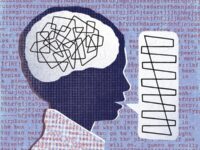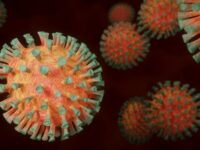Despite the modernity of medicine and the advancements mankind has made in understanding human physiology, there is perhaps no greater mystery than the driving force behind our every action, thought, and feeling: the human brain.
The physical structure of the brain is clear, but the origin of many of the existing neuronal pathologies is still uncertain. The brain – containing chemical gradients, neurotransmitters, and a confusing network of neural pathways carrying electric signals – is responsible for both astounding feats and immense suffering. Approximately 50 million Americans suffer from neurodegenerative diseases, including Alzheimer’s Disease, Huntington’s Disease, and Parkinson’s Disease, to name a few. The mysteries of the human brain are partly to blame.
Astrocytes are a type of glial cell that provide viral metabolic and structural support to neurons.
Even more curious is the perplexing role of astrocytes. Astrocytes are a type of glial cell that provide vital metabolic and structural support to neurons. They play an important role in neurogenesis (the growth of new synapses in the brain), maintain the homeostatic conditions that allow for a healthy brain, control water and ion composition outside of our neural cells, and maintain our blood-brain barrier. In the event of a brain injury or the threat of disease, astrocytes will enter a reactive state, known as reactive astrogliosis, in which the astrocytes attempt to repair any damage caused to the central nervous system (CNS).
Astrocytes are miraculous in this sense – they can have complex responses depending on the type of injury, can change their size and structure, and regulate the expression and function of genes depending on the type or severity of the damage.
So then, one might ask, how do such protective and helpful neural cells contribute to neurodegenerative diseases? The answer is that astrocytes are heterogeneous in nature: they are both helpful and incredibly detrimental to neuronal health. Although the role of astrocytes has been studied in nearly every neurodegenerative disease, focusing on their role in two of the most prominent neurodegenerative diseases provides a substantial understanding of the topic.
Alzheimer’s is the most common form of dementia and results from plaque buildup that disrupts the brain’s normal functions and interferes with cognition. Despite the advantages that astrocytes provide in the presence of this plaque – secreting enzymes to destroy it – astrocytes have been observed to develop a “proinflammatory phenotype” in which they no longer express genes involved in neuronal support as strongly, and thus contribute to neurodegeneration. These astrocytes, labeled A1 astrocytes (to distinguish them from helpful and normal functioning A2 astrocytes), are abundant in AD and secrete a neurotoxin that directly contributes to neuronal death. Furthermore, attempts at lowering the A1 astrocyte reactivity in mice had reduced the buildup of Aβ and restored neural deficits.
Targeting astrocytes among the vast number of neural components is exceedingly difficult and demands continued reseach and attention.
Affecting the motor system, Parkinson’s disease is the second most common neurodegenerative disease and is caused by the dysfunction of multiple proteins within the brain. However, the main protein contributing to neurodegeneration, the α-Synuclein protein, transforms the function of astrocytes. After exposure to the α-Synuclein protein, A1 astrocytes lead to mitochondrial dysfunction and neuronal toxicity, rapidly killing neurons and other cells in the CNS, such as oligodendrocytes.
Suppressing A1 astrocytes has been the focus of many drug studies. In one study concerning ALS, numerous cell therapy techniques have been applied in hopes of slowing or stopping neurodegeneration. Some, such as the direct implant of healthy human astrocytes into the brain (of mice), have been demonstrated to be less effective. Other approaches, such as specifically targeting the expression of proinflammatory cytokines (small proteins produced by astrocytes in the “proinflammatory state”) have proven effective in slowing pathology progression. Countless studies have been conducted on how certain drugs and therapies may help slow the progression of neurodegenerative diseases by inhibiting A1 astrocyte toxicity. The successes observed in mice trials have promoted new hope for the future of neurodegenerative disease treatment.
Still, astrocyte interactions and brain pathologies are extremely complex and present numerous challenges when developing applicable treatments to neurodegenerative diseases. Targeting astrocytes among the vast number of neural components is exceedingly difficult and demands continued research and attention. Despite the progression that has been made in understanding and targeting astrocytes, perhaps the biggest question about astrocytes is still unanswered. In the words of Stanford neurobiologist Shane Liddelow, “why [would] the injured and diseased CNS… produce a neurotoxic, reactive astrocyte?” In other words, why have our brains, when at their most vulnerable, created a habit of self-sabotage?
Frontiers in Immunology (2020). DOI: 10.3389/fimmu.2020.00635
Frontiers in Neuroscience (2020). DOI: 10.3389/fnins.2020.00824
Nature (2017). DOI: 10.1038/nature21029
Journal of Alzheimer’s Disease (2010). DOI: 10.3233/jad-2010-1221
Frontiers in Molecular Neuroscience (2019). DOI: 10.3389/fnmol.2019.00258
Journal of Molecular Biology (2020). DOI: 10.1016/j.jmb.2019.12.041






